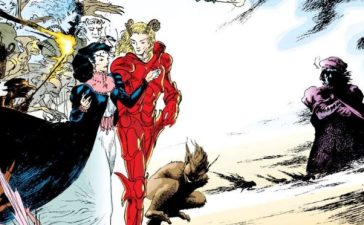
The Superhero Encyclopedias: Who’s Who and The Official Handbook of the Marvel Universe
In 1985, I came across the first issue of Who’s Who: The Definitive Directory of the DC Universe on a spinner rack at my local drugstore. The cover (the front and back covers formed one wraparound image) was full of characters in bright costumes, but the only character I immediately recognized was Aquaman. When I opened the comic, it contained these great encyclopedia-style entries on comics characters and teams, with an illustration and some text on the characters’ origins and superpowers; I was familiar with some of the characters, but unfamiliar with most. I knew about Aquaman and was an avid fan of Atari Force (the best science fiction comic of the 1980s), but I had never heard of Animal Man, Auron, or Anthro. It blew my mind that there was an android named Amazo who could duplicate the powers of the entire Justice League!
It was a heady experience. I hadn’t just discovered a superhero encyclopedia in the form of a comic book; I had discovered the DC Universe.

In the pre-Internet days of the 1980s, I had found an information resource that would help me learn about the rich history and stories of the DC Universe. As a kid, the only comics that I knew about were the ones that were available on the spinner racks of the local drugstore; if there were comic shops around back then, I didn’t know where to find them, and my friends and I sure didn’t know anybody older who could expound on all the different shades of Kryptonite that existed, or their respective effects on Superman. I knew Batman’s origin, and Superman’s, but I had no information about all these other characters.
It’s been said that the complexity of superhero comic books can drive away new readers. That may very well be the case, but I want it on record that for me, the complexity of the DC Universe was appealing. It was like I had discovered the lost civilization of Atlantis (in fact, I did discover DC Comics’ version of Atlantis, because it had an entry in Who’s Who). What I mean is, I had discovered this cool, structured superhero universe that I wanted to learn about and experience. Who’s Who was the comic book that converted me from an occasional DC Comics reader into a DC Comics fan.
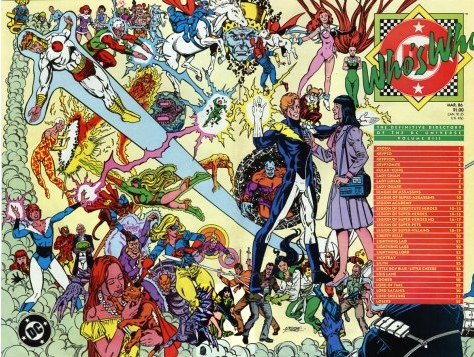
While I noticed and admired the exterior and interior artwork as a kid, it wasn’t until I was older that I appreciated the fact that DC Comics did its best to have the original creators of a character provide the artwork for that character. So Who’s Who has The Question illustrated by Steve Ditko. It has the New Gods illustrated by Jack Kirby. It has Enemy Ace illustrated by Joe Kubert. DC Comics has rebooted and revised its characters’ origins since Who’s Who was published, so the character information is largely irrelevant to today’s readers, but it’s the artwork that makes the series a classic. I have the entire 26 issue run of the series, and I treasure every single issue.
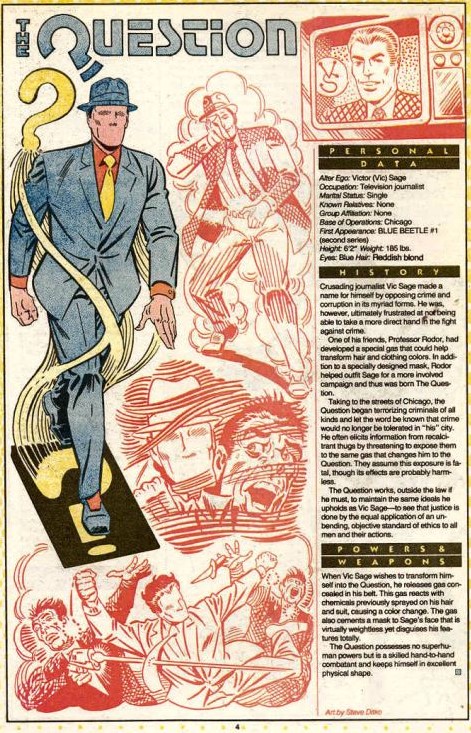
About a year after I first discovered Who’s Who, I started seeing Marvel Comics’ The Official Handbook of the Marvel Universe Deluxe Edition on the spinner racks, another superhero encyclopedia in the form of a comic book. At the time, I didn’t pick up on the “Deluxe Edition” wording; I thought that Marvel was copying DC Comics’ Who’s Who ( I was wrong). I was very excited about the Handbook; it served the same function for the Marvel Universe that Who’s Who served for the DC Universe. That is, the Handbook introduced me to the characters and story history of the Marvel Universe. Once again, the complexity of a comic book universe was not a deterrent to a new reader (that is, me), but a magnet.
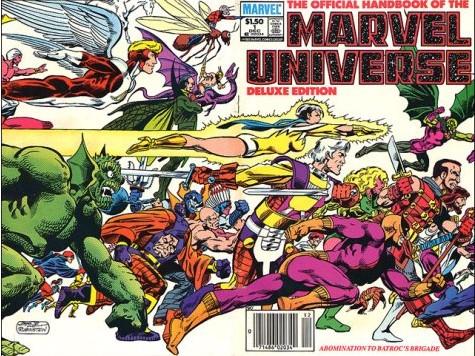
Indeed, the Handbook was even more detailed in exploring the complexity of its superhero universe. Not only did the series give a brief explanation of a character’s history and powers, but the Handbook also included diagrams of locations (like Avengers Mansion) and equipment (like Dr. Doom’s armor), and scientific explanations for many characters’ powers. I had never given thought to the physics of superheroes, but it made perfect sense, upon explanation, that Giant Man must be be able to draw extra mass from an other-dimensional source to grow in height. Also, the Handbook provided a strength range for its characters, so if you ever wondered if Thor was stronger than Spider-Man, the Handbook settled that question neatly for you by letting you know how many tons Thor and Spider-Man could respectively lift. Nuff said.
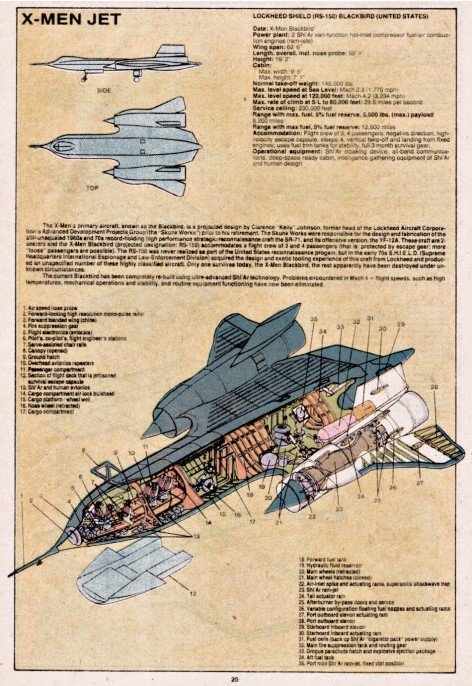
Although I discovered the deluxe edition of the Handbook in 1986, at the time I was unaware that the original Handbook series was first published in 1983. The origins of the The Official Handbook of the Marvel Universe begin in the year 1981, with the Amazing Spider-Man Annual #15. This issue had a three page comparison of the strength levels of various Marvel superhero characters. According to comics historian Jason Sacks in American Comic Book Chronicles: The 1980s, the annual generated a large amount of positive fan mail, and when Marvel Comics’ Editor-in-Chief Jim Shooter came across a copy of Jane’s Fighting Ships (which provided detailed specifications on various battleships), he was reminded of the reader interest in the strength comparisons provided in the Amazing Spider-Man annual; Shooter was inspired to create an encyclopedia of the Marvel Universe.
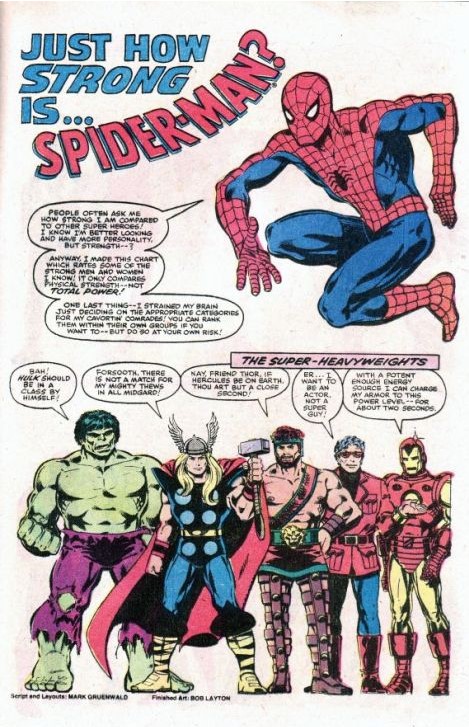
Inspiration is one thing. The work that went into creating the original Handbook was heroic. As comics historian Sean Howe notes in his book Marvel Comics: The Untold Story:
The Official Handbook of the Marvel Universe was not only the culmination of all this geekery; it was the point at which the staff’s dedication became astonishingly evident. An initial twelve issues of encyclopedic entries for hundreds of characters – something like player’s stats on the backs of baseball cards – were followed by two issues of “dead and inactive” characters, and another of “weapons, hardware, and paraphernalia.” OHOTMU was an enormous undertaking requiring more labor than anything Marvel had attempted before, and although the entire staff felt the burden, the project was spearheaded by a core suicide squad: Mark Gruenwald, who’d become the caretaker of the narrative continuity within the Marvel Universe; his assistant, Mike Carlin; Eliot Brown, who was skilled at drafting architectural plans for, say, the Avengers Mansion; and Jack Morelli, a member of the production team. They dragged pillows and sleeping bags out at night, stole couch cushions from the reception area, endured wintertime all-nighters by the heat of the Xerox machine, and secretly commandeered Marvel president Jim Galton’s private office shower. The intensity of the project ramped up as it went; eventually they’d be cramming more than 50,000 words of text into each issue.
These superhero encyclopedias from both Marvel and DC Comics were my entry points into two large, captivating fictional universes. Contrary to the frequently expressed opinion that the complexity of ongoing superhero narratives are a barrier to new readers, these superhero universes were fascinating to me and inspired me to learn more about their characters and history, an endeavor which continues to this day. I appreciate the difficult creative effort that went into making these encyclopedias, and I am grateful for them.
The images above are the property of their respective owners, and are presented for educational purposes only under the fair use doctrine of the copyright laws of the United States of America.






